Specular Surface Shape Measurement with Orthogonal Dual-Frequency Fourier Transform Deflectometry
Abstract
1. Introduction
2. Principles
2.1. The Principle of ODD
2.2. The Phase Relationship between Two Frequency Components in the Same Direction
3. Simulation
3.1. Verification of the Orthogonal Dual-Frequency Fringe Relationship under Ideal Conditions
3.2. The Performance of Recalibrated Phase Unwrapping
3.3. The Measurement Results in Simulation Shape Measurement
4. Experiment
5. Conclusions
Author Contributions
Funding
Data Availability Statement
Conflicts of Interest
References
- Saif, B.; Chaney, D.; Greenfield, P.; Bluth, M.; Van Gorkom, K.; Smith, K.; Bluth, J.; Feinberg, L.; Wyant, J.C.; North-Morris, M.; et al. Measurement of picometer-scale mirror dynamics. Appl. Opt. 2017, 56, 6457–6465. [Google Scholar] [CrossRef] [PubMed]
- Xu, Y.; Gao, F.; Jiang, X. A brief review of the technological advancements of phase measuring deflectometry. PhotoniX 2020, 1, 14. [Google Scholar] [CrossRef]
- Xu, X.; Zhang, X.; Niu, Z.; Wang, W.; Xu, M. Extra-detection-free monoscopic deflectometry for the In Situ measurement of freeform specular surfaces. Opt. Lett. 2019, 44, 4271–4274. [Google Scholar] [CrossRef] [PubMed]
- Coyle, L.; Chonis, T.; Smith, K.; Knight, J.S.; Acton, D.S.; Howard, J.; Feinberg, L. Optical Assessment of the James Webb Space Telescope Primary and Secondary Mirror Cryogenic Alignment with a Hartmann Test; SPIE: Bellingham, WA, USA, 2018; Volume 10706. [Google Scholar]
- Zhang, Z.; Chang, C.; Liu, X.; Li, Z.; Shi, Y.; Gao, N.; Meng, Z. Phase measuring deflectometry for obtaining 3D shape of specular surface: A review of the state-of-the-art. Opt. Eng. 2021, 60, 020903. [Google Scholar] [CrossRef]
- Yang, S.; Zhang, G. A review of interferometry for geometric measurement. Meas. Sci. Technol. 2018, 29, 102001. [Google Scholar] [CrossRef]
- Xue, S.; Chen, S.; Tie, G. Near-null interferometry using an aspheric null lens generating a broad range of variable spherical aberration for flexible test of aspheres. Opt. Express 2018, 26, 31172–31189. [Google Scholar] [CrossRef]
- Zhang, Z.; Wang, Y.; Huang, S.; Liu, Y.; Chang, C.; Gao, F.; Jiang, X. Three-Dimensional Shape Measurements of Specular Objects Using Phase-Measuring Deflectometry. Sensors 2017, 17, 2835. [Google Scholar] [CrossRef]
- Knauer, M.C.; Kaminski, J.; Hausler, G. Phase Measuring Deflectometry: A new approach to measure specular free-form surfaces. Opt. Metrol. Prod. Eng. 2004, 5457, 366–376. [Google Scholar] [CrossRef]
- Huang, L.; Ng, C.S.; Asundi, A.K. Fast full-field out-of-plane deformation measurement using fringe reflectometry. Opt. Lasers Eng. 2012, 50, 529–533. [Google Scholar] [CrossRef]
- Trumper, I.; Choi, H.; Kim, D.W. Instantaneous phase shifting deflectometry. Opt. Express 2016, 24, 27993–28007. [Google Scholar] [CrossRef]
- Huang, L.; Ng, C.S.; Asundi, A.K. Dynamic three-dimensional sensing for specular surface with monoscopic fringe reflectometry. Opt. Express 2011, 19, 12809–12814. [Google Scholar] [CrossRef] [PubMed]
- Han, H.; Wu, S.; Song, Z.; Zhao, J. An Accurate Phase Measuring Deflectometry Method for 3D Reconstruction of Mirror-Like Specular Surface. In Proceedings of the 2019 2nd International Conference on Intelligent Autonomous Systems (ICoIAS), Singapore, 28 February–2 March 2019; pp. 20–24. [Google Scholar]
- Su, P.; Parks, R.E.; Wang, L.; Angel, R.P.; Burge, J.H. Software configurable optical test system: A computerized reverse Hartmann test. Appl. Opt. 2010, 49, 4404–4412. [Google Scholar] [CrossRef]
- Gao, X.; Guo, P. An Improved Algorithm for 3D Reconstruction Integration Based on Stripe Reflection Method. Opt. Photonics J. 2019, 9, 11–19. [Google Scholar] [CrossRef]
- Li, M.; Li, D.; Jin, C.; Kewei, E.; Yuan, X.; Xiong, Z.; Wang, Q. Improved zonal integration method for high accurate surface reconstruction in quantitative deflectometry. Appl. Opt. 2017, 56, F144–F151. [Google Scholar] [CrossRef] [PubMed]
- Huang, L.; Xue, J.; Gao, B.; Zuo, C.; Idir, M. Zonal wavefront reconstruction in quadrilateral geometry for phase measuring deflectometry. Appl. Opt. 2017, 56, 5139–5144. [Google Scholar] [CrossRef] [PubMed]
- Wu, J.; Zhou, Z.; Liu, Q.; Wang, Y.; Wang, Y.; Gu, Y.; Chen, X. Two-wavelength phase-shifting method with four patterns for three-dimensional shape measurement. Opt. Eng. 2020, 59, 024107. [Google Scholar] [CrossRef]
- Shoji, E.; Komiya, A.; Okajima, J.; Kubo, M.; Tsukada, T. Three-step phase-shifting imaging ellipsometry to measure nanofilm thickness profiles. Opt. Lasers Eng. 2019, 112, 145–150. [Google Scholar] [CrossRef]
- Nguyen, M.T.; Ghim, Y.-S.; Rhee, H.-G. Single-shot deflectometry for dynamic 3D surface profile measurement by modified spatial-carrier frequency phase-shifting method. Sci. Rep. 2019, 9, 3157. [Google Scholar] [CrossRef]
- Wu, Y.X.; Yue, H.M.; Yi, J.Y.; Li, M.Y.; Liu, Y. Dynamic specular surface measurement based on color-encoded fringe reflection technique. Opt. Eng. 2016, 55, 024104. [Google Scholar] [CrossRef]
- Wang, Z. Review of real-time three-dimensional shape measurement techniques. Measurement 2020, 156, 107624. [Google Scholar] [CrossRef]
- Liu, K.; Wang, Y.; Lau, D.L.; Hao, Q.; Hassebrook, L.G. Dual-frequency pattern scheme for high-speed 3-D shape measurement. Opt. Express 2010, 18, 5229–5244. [Google Scholar] [CrossRef] [PubMed]
- Wu, Z.; Guo, W.; Zhang, Q. Two-frequency phase-shifting method vs. Gray-coded-based method in dynamic fringe projection profilometry: A comparative review. Opt. Lasers Eng. 2022, 153, 106995. [Google Scholar] [CrossRef]
- Miao, Z.X.; Zhang, Q.C. Dual-frequency fringe for improving measurement accuracy of three-dimensional shape measurement. Chin. Opt. Lett. 2021, 19, 102601. [Google Scholar] [CrossRef]
- Hyun, J.-S.; Zhang, S. Enhanced two-frequency phase-shifting method. Appl. Opt. 2016, 55, 4395–4401. [Google Scholar] [CrossRef] [PubMed]
- Kemao, Q. Windowed Fourier transform for fringe pattern analysis. Appl. Opt. 2004, 43, 2695–2702. [Google Scholar] [CrossRef] [PubMed]
- Huang, L.; Kemao, Q.; Pan, B.; Asundi, A.K. Comparison of Fourier transform, windowed Fourier transform, and wavelet transform methods for phase extraction from a single fringe pattern in fringe projection profilometry. Opt. Lasers Eng. 2010, 48, 141–148. [Google Scholar] [CrossRef]
- Kemao, Q. Two-dimensional windowed Fourier transform for fringe pattern analysis: Principles, applications and implementations. Opt. Lasers Eng. 2007, 45, 304–317. [Google Scholar] [CrossRef]
- Gonzalez, R.C. Digital Image Processing; Pearson Education: Bengaluru, India, 2009. [Google Scholar]
- Zhao, M.; Huang, L.; Zhang, Q.C.; Su, X.Y.; Asundi, A.; Kemao, Q. Quality-guided phase unwrapping technique: Comparison of quality maps and guiding strategies. Appl. Opt. 2011, 50, 6214–6224. [Google Scholar] [CrossRef]
- Kemao, Q.; Gao, W.; Wang, H. Windowed Fourier-filtered and quality-guided phase-unwrapping algorithm. Appl. Opt. 2008, 47, 5420–5428. [Google Scholar] [CrossRef]
- Fu, Y.; Wang, Y.; Wu, J.; Jiang, G. Dual-frequency fringe Fourier transform profilometry based on defocusing. Opt. Commun. 2013, 295, 92–98. [Google Scholar] [CrossRef]
- Zhang, Z.Y. A flexible new technique for camera calibration. IEEE Trans. Pattern Anal. Mach. Intell. 2000, 22, 1330–1334. [Google Scholar] [CrossRef]
- Li, Z.; Yin, D.; Zhang, Q.; Gong, H. Monoscopic Phase Measuring Deflectometry Simulation and Verification. Electronics 2022, 11, 1634. [Google Scholar] [CrossRef]
- Xu, X.; Zhang, X.; Niu, Z.; Wang, W.; Zhu, Y.; Xu, M. Self-calibration of in situ monoscopic deflectometric measurement in precision optical manufacturing. Opt. Express 2019, 27, 7523–7536. [Google Scholar] [CrossRef] [PubMed]
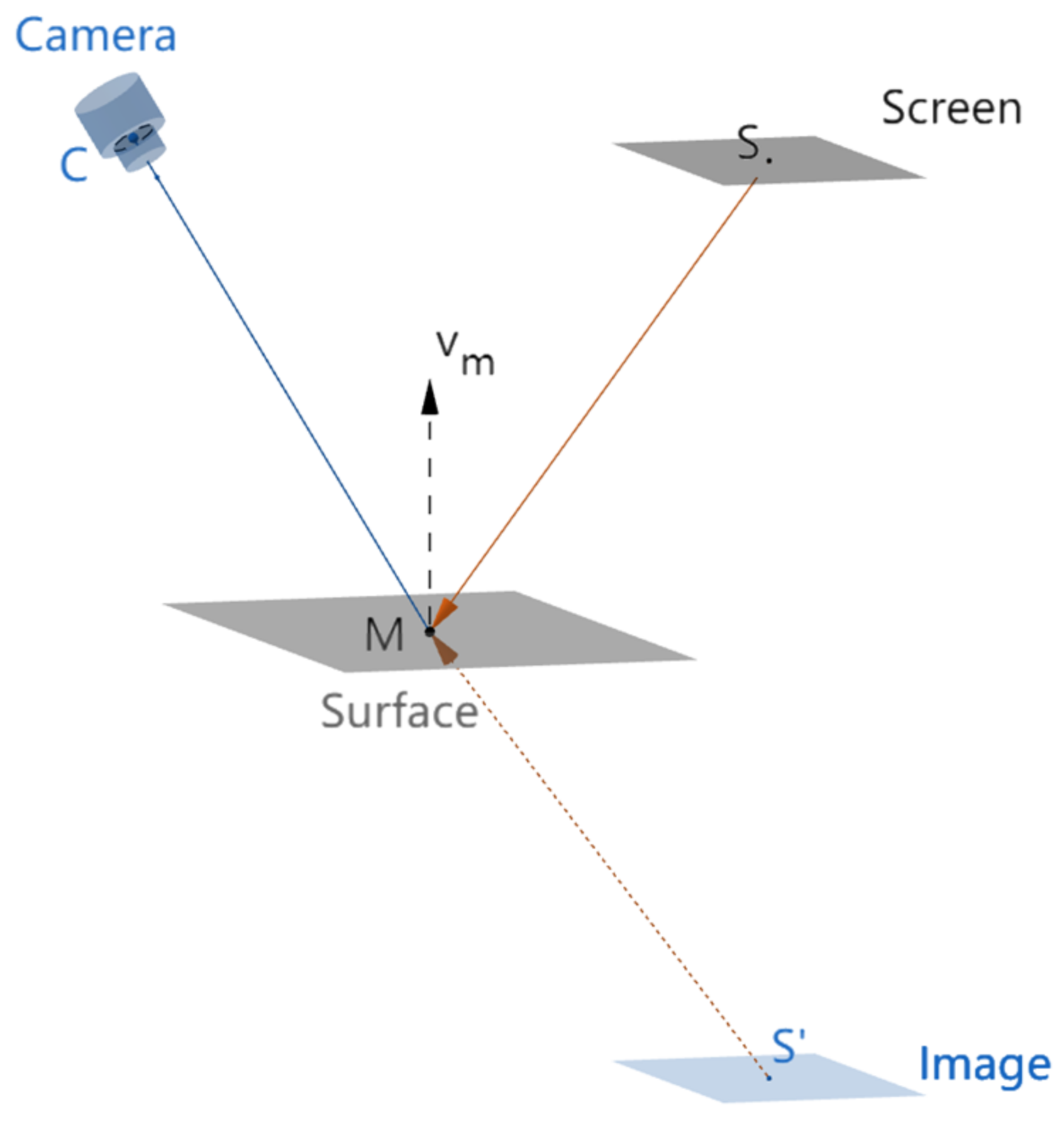
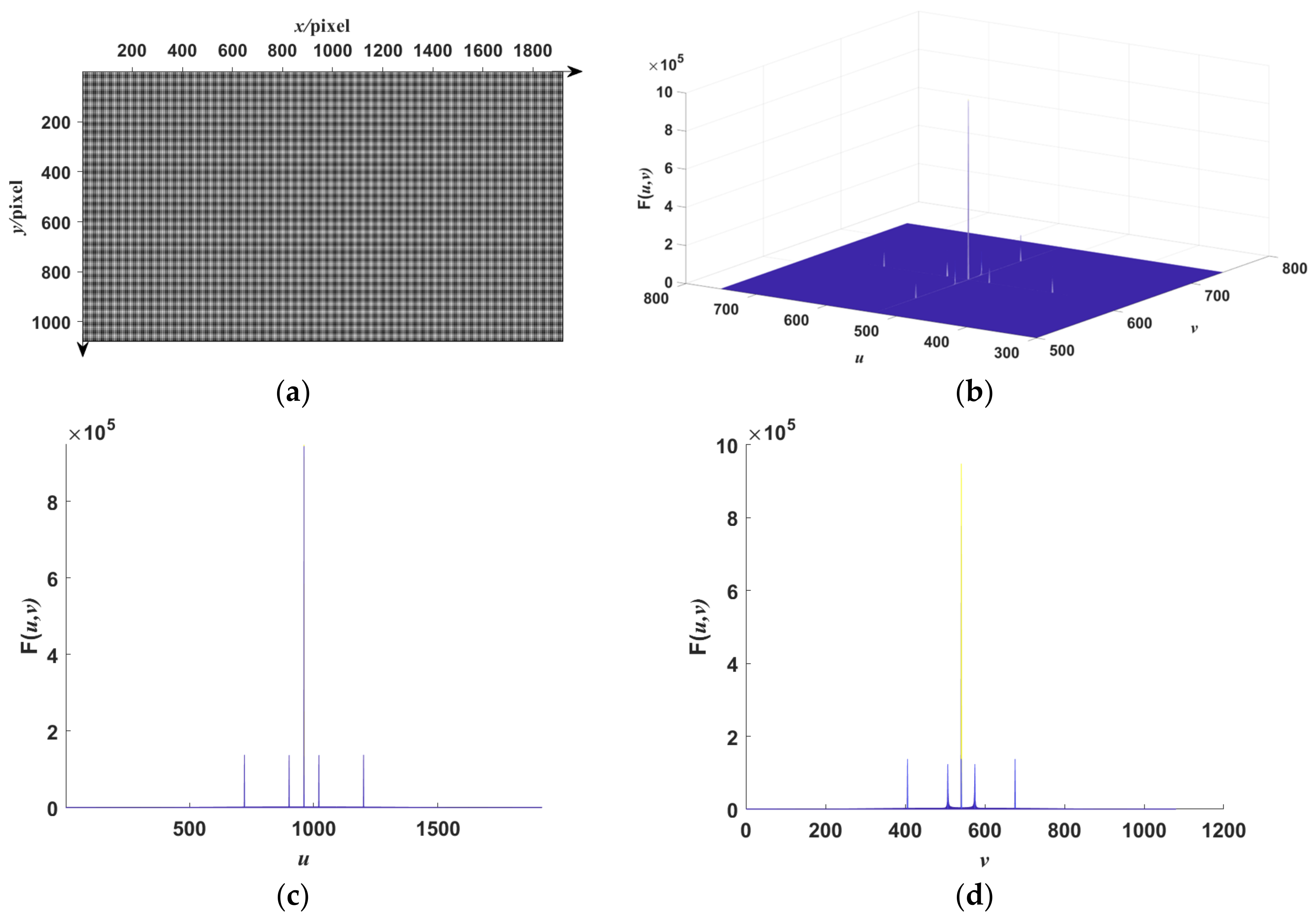



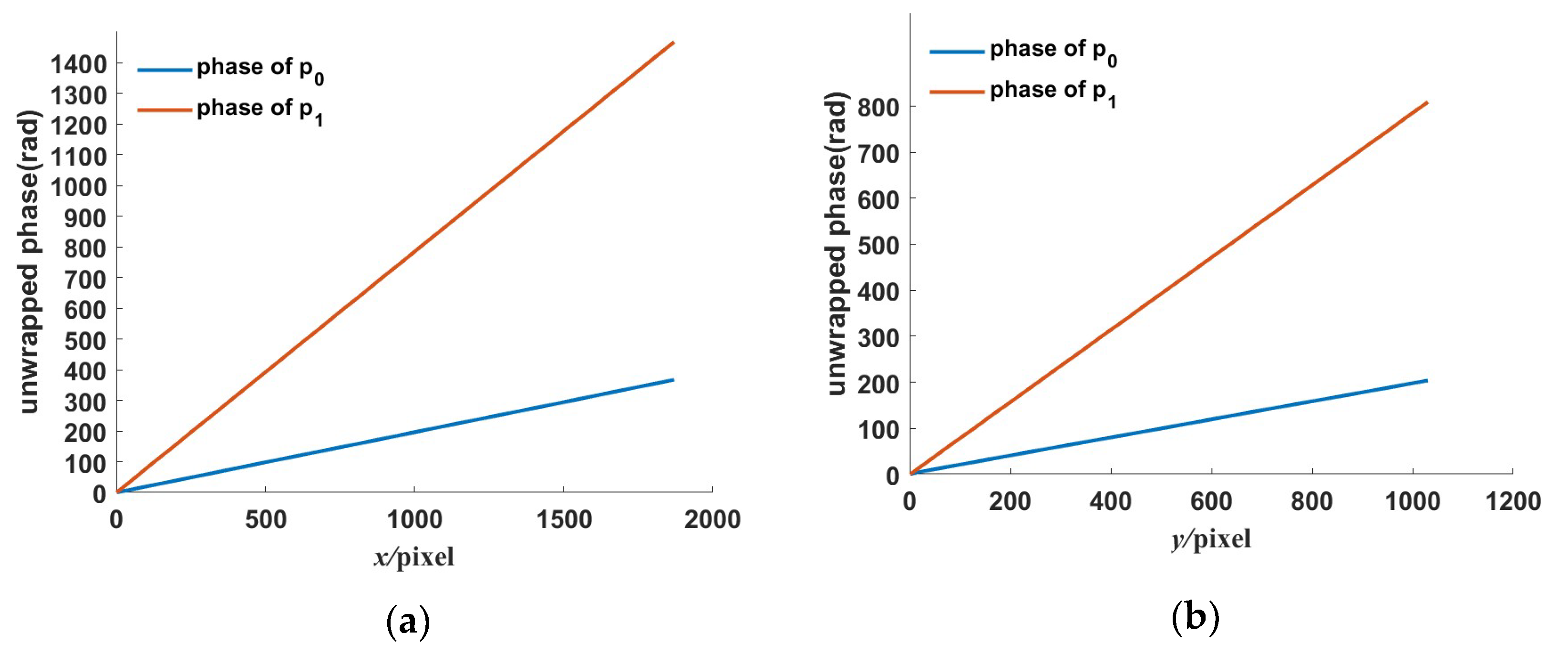
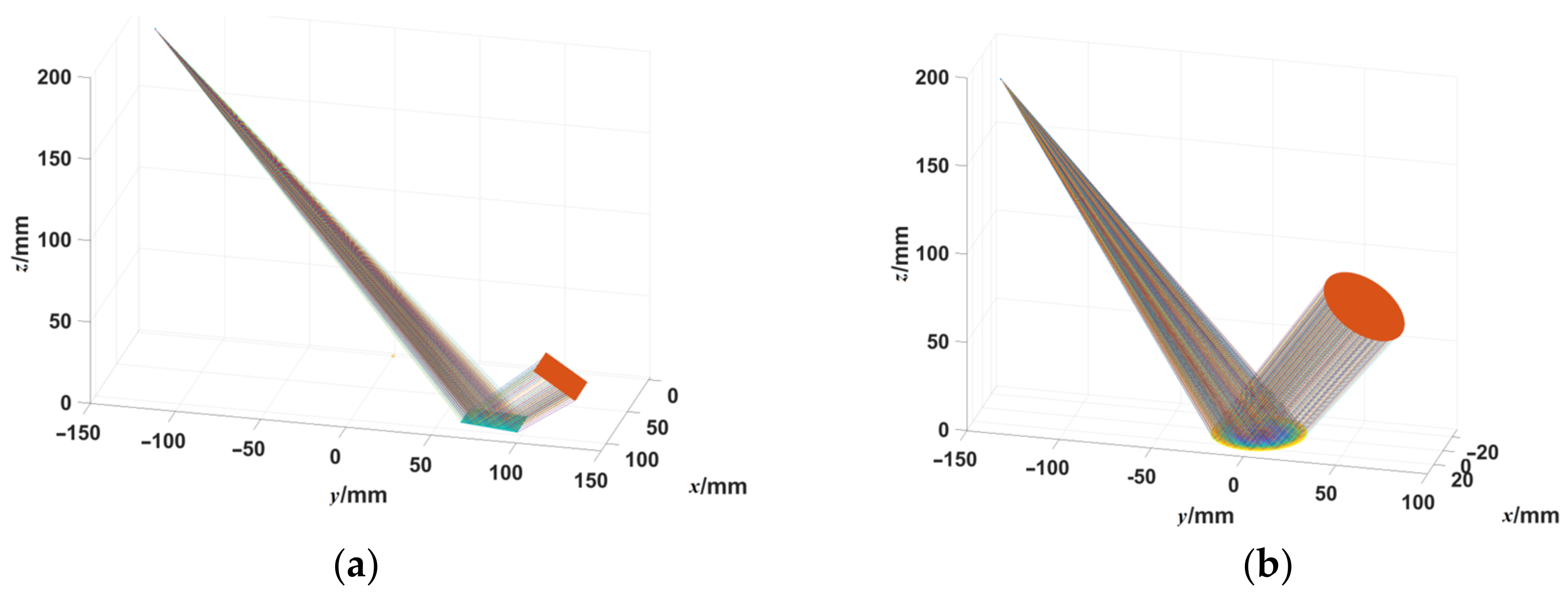
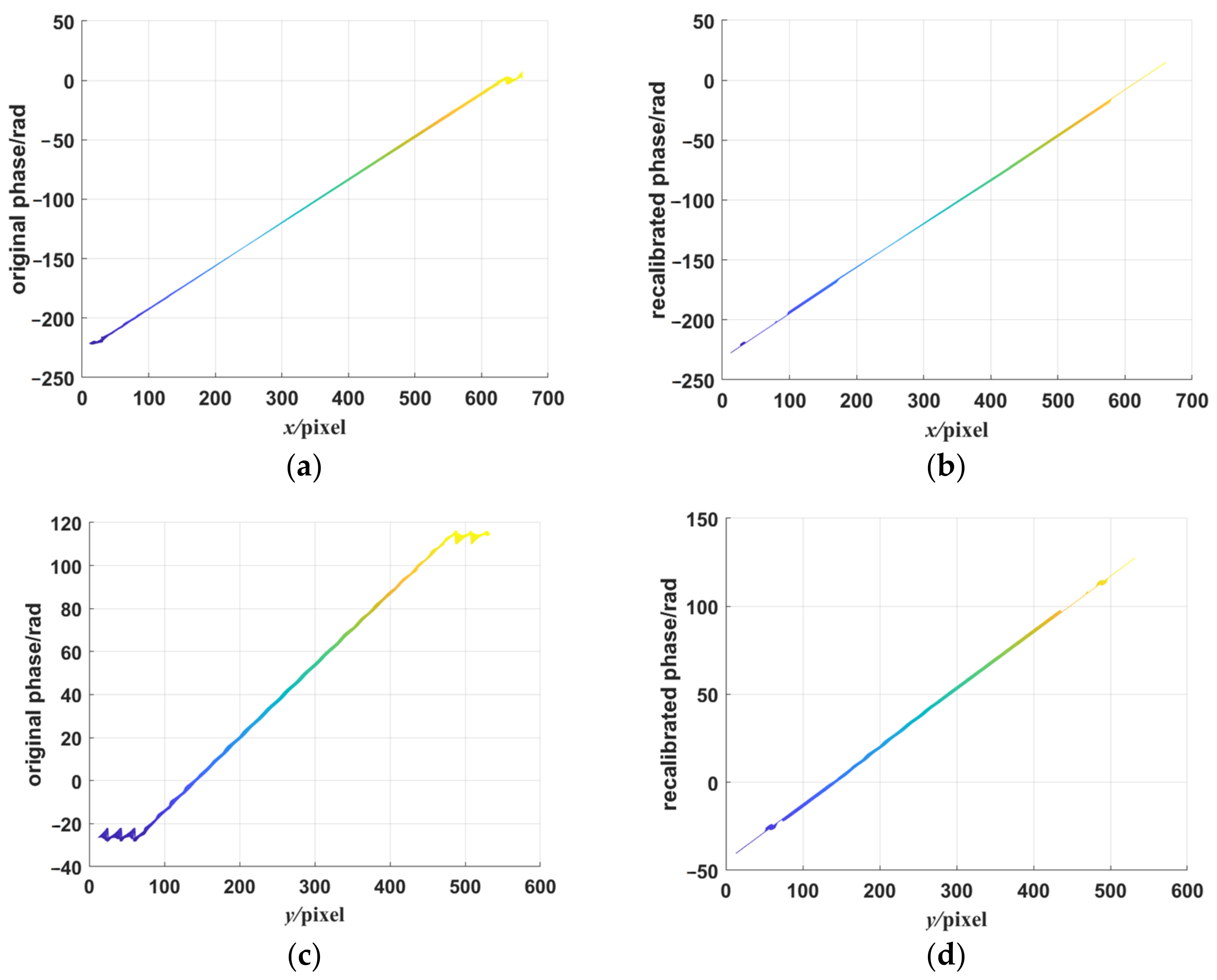

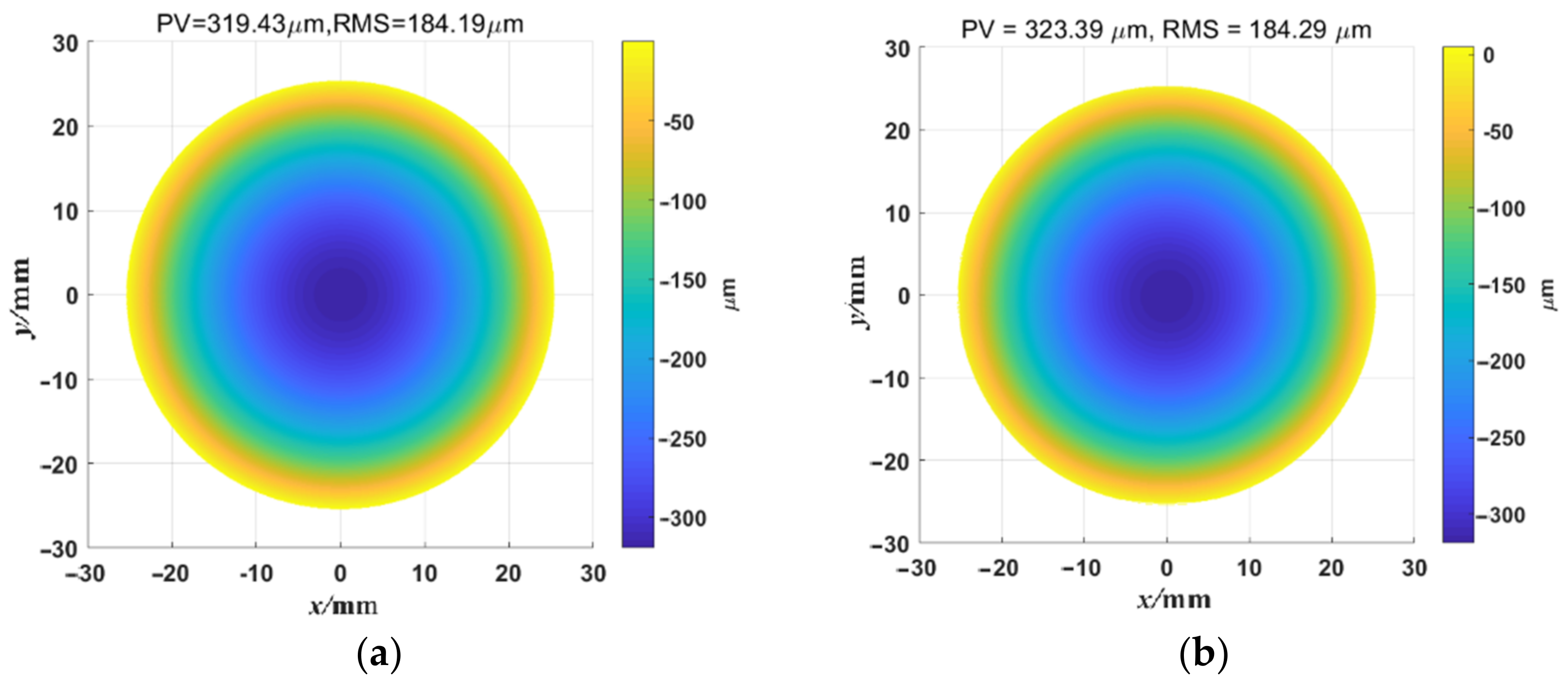
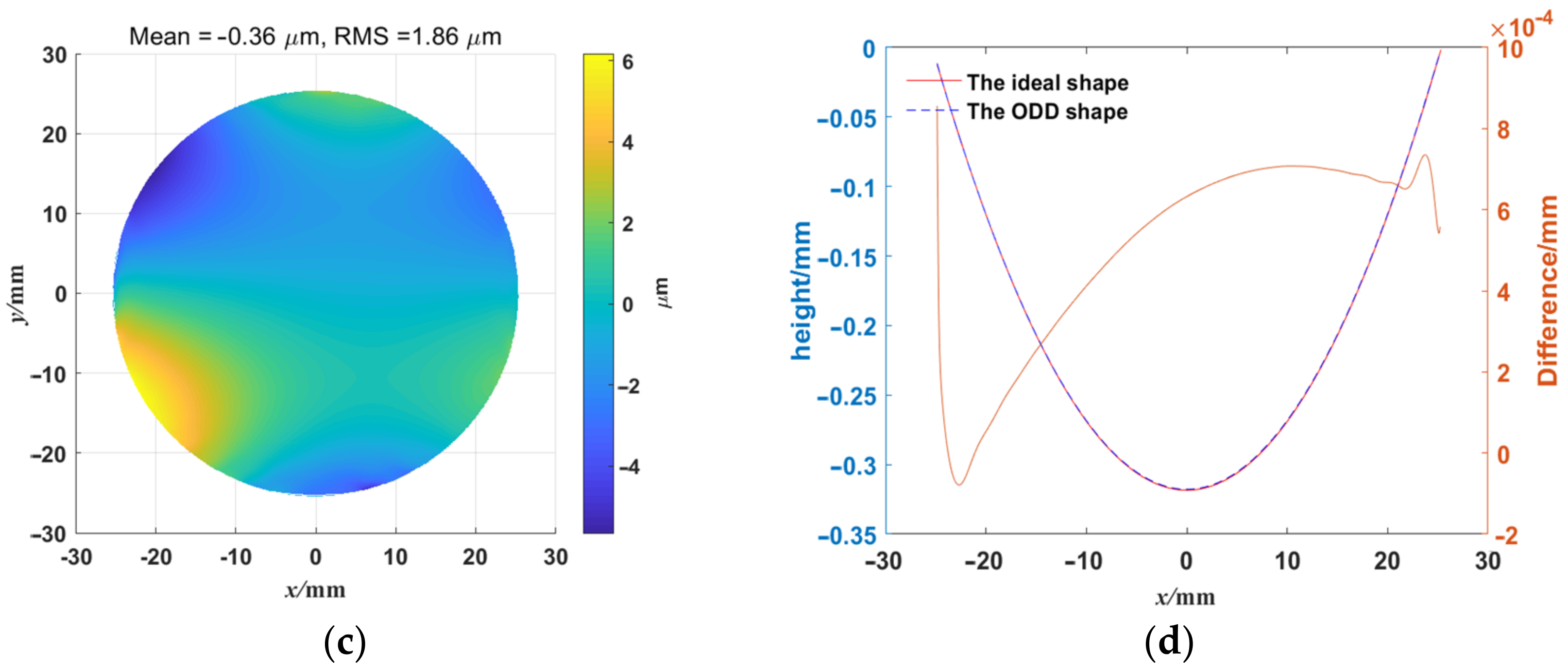
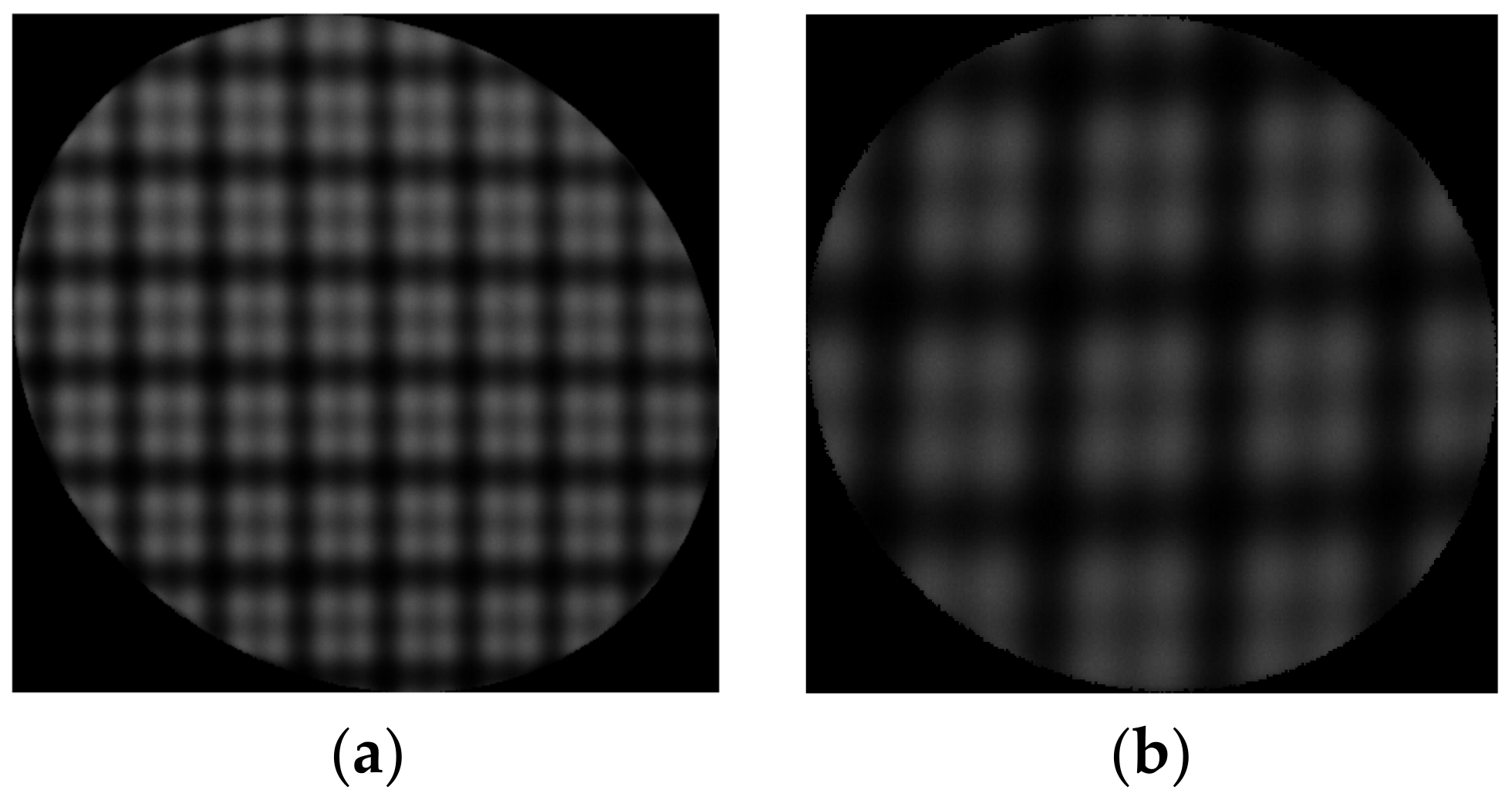
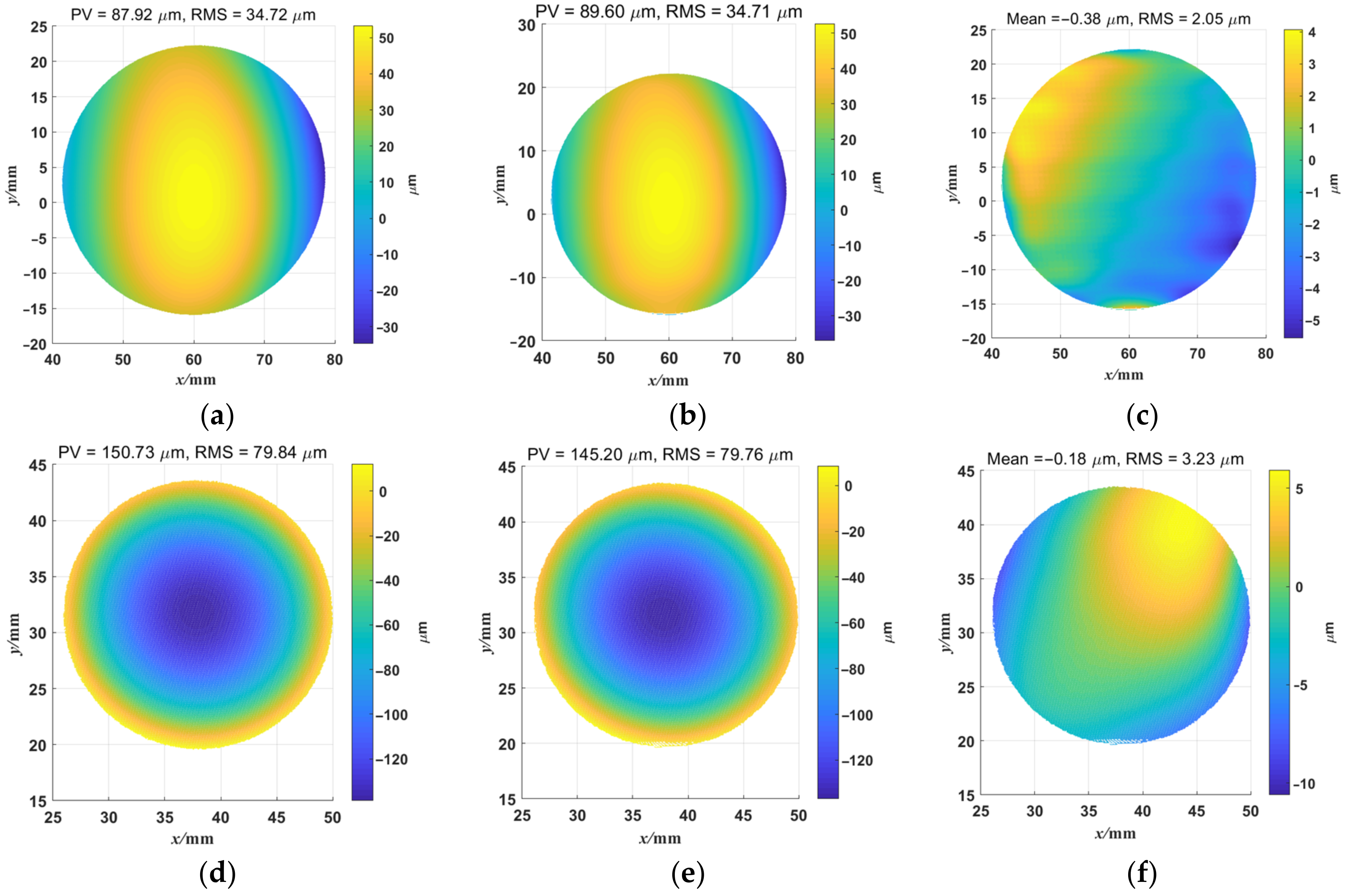
Disclaimer/Publisher’s Note: The statements, opinions and data contained in all publications are solely those of the individual author(s) and contributor(s) and not of MDPI and/or the editor(s). MDPI and/or the editor(s) disclaim responsibility for any injury to people or property resulting from any ideas, methods, instructions or products referred to in the content. |
© 2023 by the authors. Licensee MDPI, Basel, Switzerland. This article is an open access article distributed under the terms and conditions of the Creative Commons Attribution (CC BY) license (https://creativecommons.org/licenses/by/4.0/).
Share and Cite
Li, Z.; Yin, D.; Yang, Y.; Zhang, Q.; Gong, H. Specular Surface Shape Measurement with Orthogonal Dual-Frequency Fourier Transform Deflectometry. Sensors 2023, 23, 674. https://doi.org/10.3390/s23020674
Li Z, Yin D, Yang Y, Zhang Q, Gong H. Specular Surface Shape Measurement with Orthogonal Dual-Frequency Fourier Transform Deflectometry. Sensors. 2023; 23(2):674. https://doi.org/10.3390/s23020674
Chicago/Turabian StyleLi, Zhiming, Dayi Yin, Yuanyu Yang, Quan Zhang, and Huixing Gong. 2023. "Specular Surface Shape Measurement with Orthogonal Dual-Frequency Fourier Transform Deflectometry" Sensors 23, no. 2: 674. https://doi.org/10.3390/s23020674
APA StyleLi, Z., Yin, D., Yang, Y., Zhang, Q., & Gong, H. (2023). Specular Surface Shape Measurement with Orthogonal Dual-Frequency Fourier Transform Deflectometry. Sensors, 23(2), 674. https://doi.org/10.3390/s23020674



